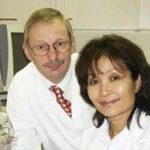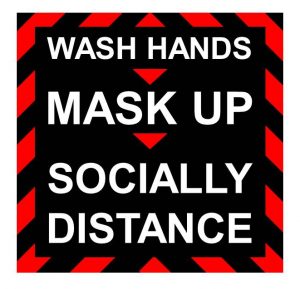27th October 2020 – Asymptomatic Silent Spreaders to Super Spreaders.
A Blog by Dr David J Flavell PhD FRCPath & Dr Sopsamorn (Bee) Flavell BSc PhD
Scientific Directors of Leukaemia Busters
A DOSE OF COVID-19 (Part 2)
27th October 2020
Intensive research conducted globally since the beginning of the pandemic in early 2020 is beginning to shine a light on some of the most important features of the SARS-CoV-2 virus that causes COVID-19. It now seems likely that only some infected individuals transmit the virus whilst others seem to be super spreaders. Understanding the biological reasons behind such variations will inform us on the future strategies needed to contain and eventually defeat the virus either with or without an effective vaccine.
Dose-Response Relationship
In biology there is a general universal rule that states the bigger the dose of something the bigger the biological response to it. This is something called the dose-response effect. Simply put if the dose is low then the response is also low and conversely if the dose is high then so is the response, it’s common sense really. The responses can be a whole variety of different things under measurement, for example the killing of cancer cells by a cytotoxic drug or the way in which cells respond to different doses of a hormone. Such dose-response effects are accurately predictive and are used with great frequency in biomedical research, particularly in the drug discovery process. It’s possible to plot on a graph a curve that shows the Dose-response effect with a high degree of predictability.
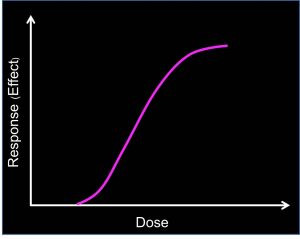
Figure: A graph of a dose-response effect showing the bigger the dose the greater the response, in this case as a commonly seen sigmoidal curve.
You might ask what does the dose-response effect have to do with COVID-19?
Well it’s simply this. Transmission of the virus from one person to another is going to be dependent on the number of virus particles or dose that is transmitted from the infected individual to the non-infected victim. The bigger the number of viruses transmitted (the dose) the more likely that the infection will take hold in any previously non-infected individual.
And there’s much more to this. Evidence is building that in some cases the severity of COVID-19 symptoms may in fact be determined by the dose of virus that the individual receives, the bigger the dose the worse the symptoms that develop as the virus finds its way deeper into the airway passages and deeper regions of the lungs. Conversely, the smaller the dose transmitted from one individual to another the milder the symptoms that develop in an individual with a smaller viral load.
Viral Load, is it important?
Clinical evidence supporting that this is indeed the case is accumulating and represents a classic case of dose-response effect as is the case for most things in the biological world. Differences in the number of viruses carried and shed by infected individuals is referred to as the viral load and whilst this probably does not account for everything it very likely plays a very important role.
Asymptomatic or Super Spreader – who is actually infectious to others?
Closely related to the viral load is the question, who is actually infectious to others? It’s becoming clear that some positive COVID-19 cases are not highly infectious because they don’t shed very many virus particles in their saliva and nasal secretions. These individuals can therefore deliver only a small or even no dose of virus to any unsuspecting bystander. The biological reasons for this have yet to be determined but one likely reason is that their immune system is suppressing infectious virus production in their infected airway cells.
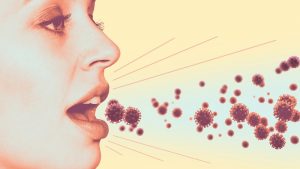
Some of these individuals may be completely asymptomatic and if the R number was to be based on this type of individual it would be small. Then there are the super spreaders (again some of which may be asymptomatic, again this is something that research is currently trying to establish) who it seems shed large numbers of viral particles and therefore deliver a much bigger dose capable of infecting many individuals. If the R number was based on this type of individual alone it would be high.
In reality there is probably a spectrum of different types of infected individuals some very low, some with very high infectious viral loads and some filling the gap in between these extremes that overall gives us an average R number. Evidence is emerging to suggest that there are some infected individuals who don’t shed infectious viral particles at all. More research is needed to understand the reason behind this wide variation in virus shedding and load but in all probability it comes down to the way in which different individuals are able to control the viral infection with their immune systems very likely playing a key role.
It is a complex picture with very recent research telling us that the virus produces a protein that subverts the immune response preventing the production of a protein called interferon that normally suppresses virus replication. There may well be variations in the way different individuals deal with this immunologically, accounting for why some are able to control the COVID-19 infection better than others. We will come to understand all of these things in the fullness of time but for now at this point in the pandemic where our understanding is incomplete, this acts to confound a clear picture of virus transmission between individuals and what is the best strategy to contain the epidemic.
Take Heed and Responsibility
Now, at this particular point in the pandemic, several months or even a year away before an effective vaccine is available everybody needs to take responsibility and do what is necessary. There is one sure way of ensuring that infections don’t barrel out of control, by adopting and strictly adhering to a trinity of mitigation and the methods that are known to reduce the viral transmission rates between individuals.
- It is well established that COVID-19 is transmitted from contaminated hard surfaces so wash those hands regularly and be aware of what you’re touching or of where you’re sitting in public places. Carry a small bottle of hand sanitiser to use whenever you have touched a hard surface in public and wash your clothes after being in public places.
- Most important of all be aware at all times that the SARS-CoV-2 virus is airborne, transmitted from one individual to another through the air as tiny spittle droplets generated constantly when people speak, cough, sneeze or even just breath. This makes social distancing an important mitigation measure.
- But arguable most important face mask use to reduce or block infected particles leaving the mouths and noses of infected individuals and also to protect non-infected individuals by reducing the number of viral particles that are able to enter their mouths and noses. This way the dose of virus received or transmitted is reduced significantly which as we said earlier in this blog is a vitally important factor in whether an infection establishes itself or gives rise to serious symptoms or not.
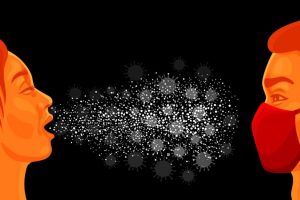
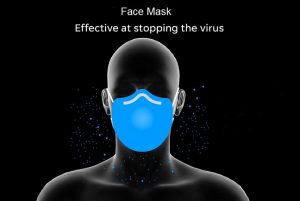
Such measures are particularly important indoors or in poorly ventilated spaces but we would also suggest that mask use is also important outdoors in public spaces now it has been shown that infected aerosolized spittle from infected individuals can potentially travel for several meters blown on the wind. But make no mistake it will require for everyone to practice this mantra whenever required in public spaces or when encountering anyone from outside your own permitted bubble.
Through the rigorous combination of all three of these measures we should be able to get through until and if that promised effective and safe vaccine becomes available for the masses. Until such time let’s ensure that we do just this because if we don’t the price we shall have to pay will be truly immense in every dimension of our lives.
A Free High Spec Washable Face Mask for You!

We have obtained funding for a supply of high quality reusable/washable 4-ply face masks that we are offering to people in limited numbers for free. To claim your mask please follow the instructions given at the end of the blog entitled Mask Up!.
Note: None of Leukaemia Busters research funds have been used in the supply of these masks.
To read our other blogs click here.
For an up to date on our COVID-19 blog please follow us on Twitter:

